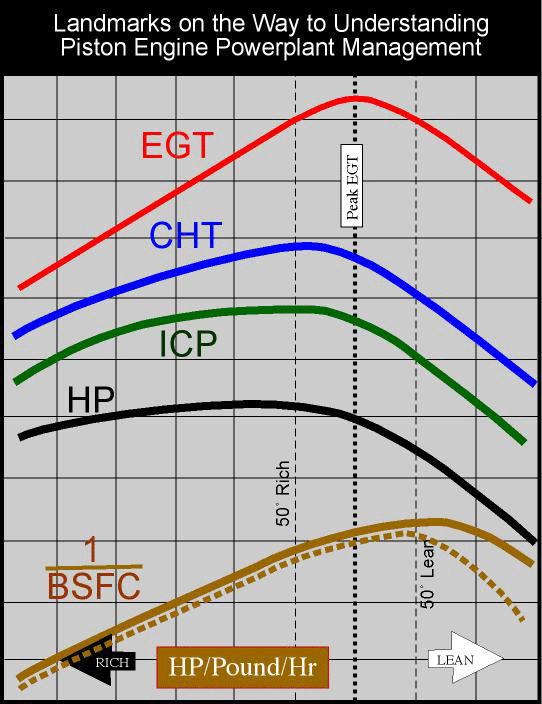Yr right.
1. Please explain what happens to exhaust valve and seat temperature as you lean the engine, from rich to peak and beyond.
2. Is the exhaust valve and seat hottest at; A. 150ROP B. 75ROP C.35-50ROP D. 20LOP
but I've seen the results of over peak leaning as many engineers have.
Are you sure? Lean operations occur on the LEAN side of Peak EGT. Rich operations occur on the Rich side of Peak EGT.
What you have seen is the results of poor manufacture at the OEM, and at times accelerated by temperature and pressure by operating at a mixture either not rich enough, or not lean enough. But it is not from operating LOP. To say such a thing shows a lack of understanding of the science.
American Airlines had 400,000,000 hours of data in the 60's about why their engines were now lasting to a TBO of 3600 hours when compared to around 700-750 hours when run ROP as you might be suggesting. That is ROP but not rich enough, or lean enough.
The Whyalla engines were run in the climb not rich enough, they were never LEAN operations as chemically they are ROP mixtures. The flaws in those engines were a defect in the crank, accelerated by mag timing advanced causing higher ICP's and CHTs. The other one had been operating in detonation from not rich of peak enough operations. This one failed due to a preignition event.
Detonation. This is something I am heavily involved with, I have seen more aviation gasoline detonation testing than I guess anyone in Australia, so I feel qualified to comment here. Under what circumstances can detonation be invoke?
A:Full Rich-150dF ROP ?
B:40dF LOP - Peak EGT ?
C: 35-50dF ROP?
With a conforming Normally Aspirated engine, on conforming 100LL can detonation be induced?
With a conforming Turbocharged engine, on conforming 100LL can detonation be induced, and if so under what conditions?
If you are interested, the NACA (pre NASA) did studies on valve temperature at varying mixture and other parameters circa WWII and later n the 60's Lycoming did the same, and oddly enough got the same result. In more recent years with far more sophistication the same data was collected and plotted with Internal Cylinder Pressure. The results of this are found in this well known graph.

If you are willing to learn some things new, from the 1940's I am happy to help.
All the best.
